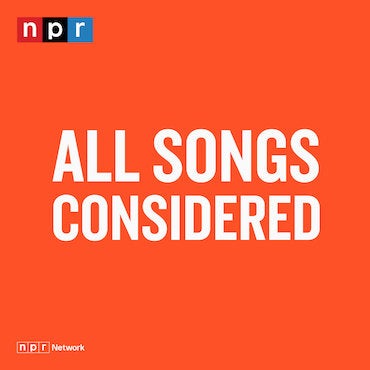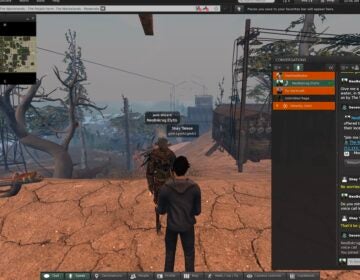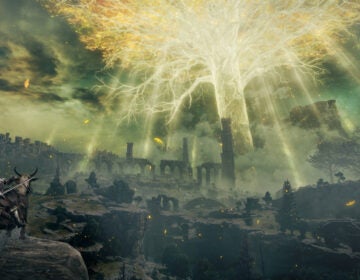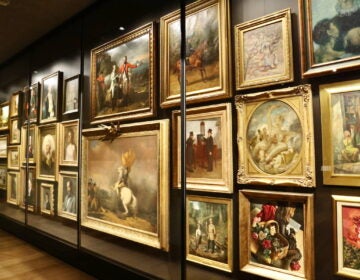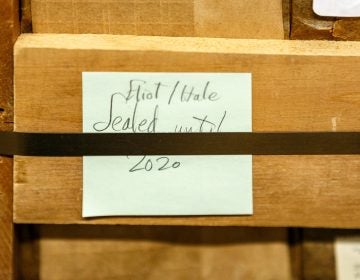Virtual reality classical concert creates new experiences for fans
For four days, audience members were invited to experience performances by the Mahler Chamber Orchestra by strapping on virtual reality headsets and headphones.
Listen 2:17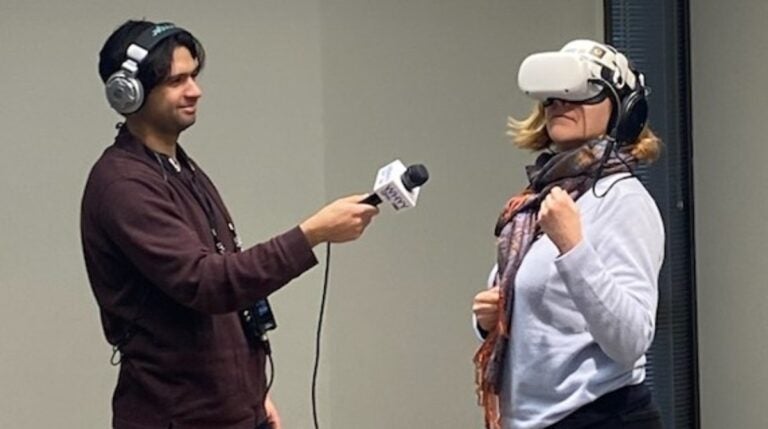
Reporter Grant Hill (left) and host Maiken Scott of WHYY’s “The Pulse” interact with virtual reality headsets and headphones showing a quintet playing Mozart. (Alexis Branagan, Princeton University Concerts)
When a world-renowned orchestra performs at Princeton University, the music department’s vacant practice rooms usually are not where the action happens. But during the U.S. premiere of Future Presence, the sold-out immersive virtual reality installation presented by Princeton University Concerts, those empty rooms became center stage.
For four days, audience members were invited to experience performances by the Mahler Chamber Orchestra by strapping on virtual reality headsets and headphones.
In small groups, and with the assistance of volunteers, listeners wandered around on a virtual stage as dozens of digitally rendered musicians played legendary classical works.
The installation is the latest in the Princeton University Concerts’ Performances Up Close series.
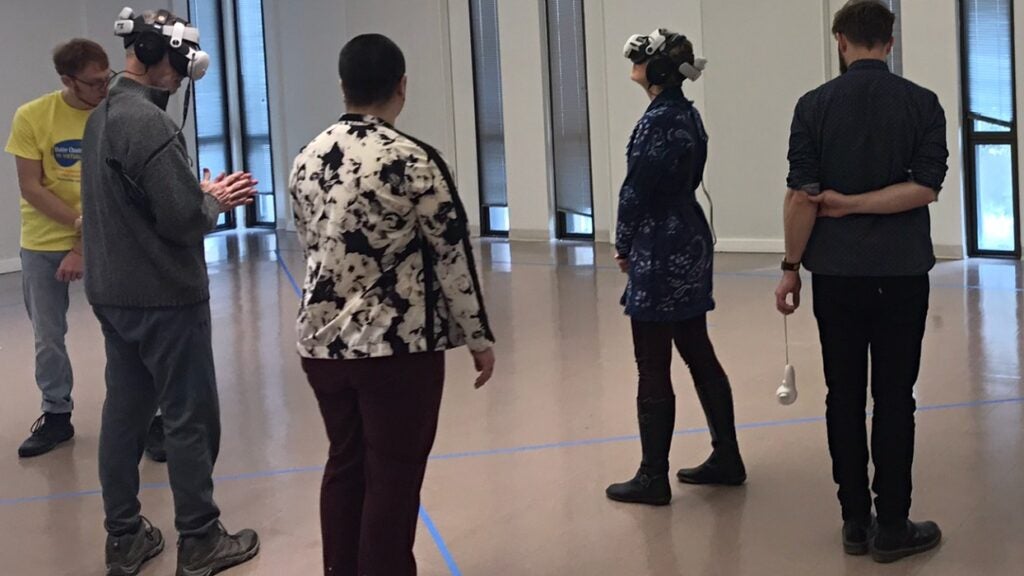
“[The series] originally was formed to kind of break down a lot of the traditional barriers that people feel about going to concerts,” director of Princeton University Concerts Marna Seltzer said.
“We tend to do it in our concert hall in a very intimate setting with about 200 people with the musicians very close to the audience. This is a totally different way of thinking about ‘up close.’”
Immersive visuals and binaural audio offered a new way to experience the music, depending on location. Stroll over to the cellist, and the listener will hear more cello.
“We started out with a 360 video,” said Henrik Oppermann, the audio engineer behind the installation. “And while doing this production, I had the idea [that] there’s actually way more in there that you can move through this complex sound field.”

Recording for the installation started in 2020.
“Ultimately, the goal is to allow you to listen differently in all contexts,” said Tim Summers, a violinist in the orchestra who helped lead the project. He believes the technology allows listeners to experience the music as players do and the one-of-a-kind feeling on the stage.
“What we hope is that by listening to these, people can wake up an ability to listen closely inside the music to what’s going on, to listen to what people are doing, and to listen to how they’re listening to each other, and to also listen to how pieces are built within.”

Virtual reality may never replace the magic of a truly live performance, but Henrik Oppermann believes the technology will empower artists of the future to form deeper connections with fans in new ways.
“It’s really about creating different experiences and getting close up with someone and maybe going into a rehearsal space or a jam session, which makes it very interesting and getting into places that you actually can’t explore in your regular life.”
Marna Seltzer said this future is already here.
“I was just talking to a woman in the lobby who came out of the experience of hearing Mendelssohn’s ‘Midsummer Night’s Dream’ completely overwhelmed. And she said, ‘I love this. I’m 76 years old and I’ve always wanted to be a conductor. And I just decided I’m going to conduct my way through this experience.’”
Subscribe to The Pulse
WHYY is your source for fact-based, in-depth journalism and information. As a nonprofit organization, we rely on financial support from readers like you. Please give today.

